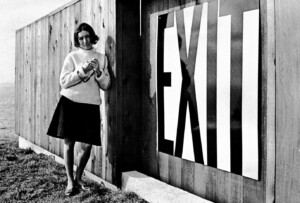Paul Benjamin Auster died on May 1 in Brooklyn at the age of 77. His death was due to complications from lung cancer and confirmed by Jacki Lyden, a close friend, according to The New York Times.
Born to a Jewish family in Newark, New Jersey, in 1947, Auster quickly found his way across the Hudson River and acquired two degrees in literature from Columbia University.
Auster’s work is integrally linked not just to New York but to the happenings of an artsy, pre-gentrified, 1980s Brooklyn. A Park Slope resident, he expertly rendered the borough before, as poet Meghan O’Rourke put it in The People’s Gazette, “‘Brooklyn’ became a place where every novelist seemed to live, from Colson Whitehead to Jhumpa Lahiri. Auster made being a writer seem like something real, something a person actually did.”
View this post on Instagram
Appreciating Auster didn’t just require reading—his breakout New York Trilogy haunted him across his multidecade, 30+ book career—but viewing. Starting in the early 1990s, Auster wrote screenplays, and his scripts for Smoke and Blue in the Face (the latter which he also directed) collided an interesting mix of postwar realism and European-tinged surrealism. This morning, NPR aired a recording of Auster recalling how not specific novels or writers most influenced his haunted style of storytelling, but a real-life event. As a boy at summer camp, Auster witnessed as the camp companion next to him was struck by lightning, dying immediately: “He was struck down from the sky.” This sense of unfairness runs throughout his work.
Smoke, released in 1995, is predicated on a similar flashbulb tragedy, albeit a more urban one: A local Brooklyn man’s wife was shot by a stray bullet during a bank robbery on her quiet, residential street. The widower is the movie’s main character, and viewers watch him piece his life back together through an obsessive writing schedule, a come-to-Jesus moment after a local boy saves his life, and the daily social happenings at the corner cigar shop. Auster’s New York, a far cry from the glamor of Warhol’s Factory or Fifth Avenue, is a city that New Yorkers recognize even today: Banal evils and unexpected wins play out on the block’s stage, analyzed and critiqued at too-small tables in pocket-sized kitchens with a box fan blowing somewhere behind your head. All of this is so normal, but it culminates in the special “closeness” many feel to Auster’s writing.
Auster diverges from the literary narrative of Smoke to a more ethnographic study of his adopted borough in the companion piece Blue in the Face, released the same year as Smoke and also directed by Wayne Wang. Set at the same cigar shop and starring some familiar faces, this film shows the author’s directorial eye and brings in additional voices: Lou Reed has a memorable and hilarious cameo, Madonna wows the guys on the corner when delivering a sexy telegram, and two guys wax poetic about plastic bags caught in the trees of Prospect Park. The everyday trials of the film are reminiscent of another New York icon’s take on the city: Fran Leibowitz admits in Pretend It’s a City: “I find real life challenging enough. If I get to the dry cleaners without having a huge fight, that’s challenging enough.”
With Auster’s death, New York has lost yet another tether to a bygone version of itself. The city has become safer, yes, but also more gentrified. Across his novels and films, a tangled web of personalities, histories, traumas, and encounters force Auster’s characters to set aside their meanness and allow their community connections to shine. That is what 21st-century New York sorely lacks. The stage has been set for writers to follow in Auster’s footsteps.











